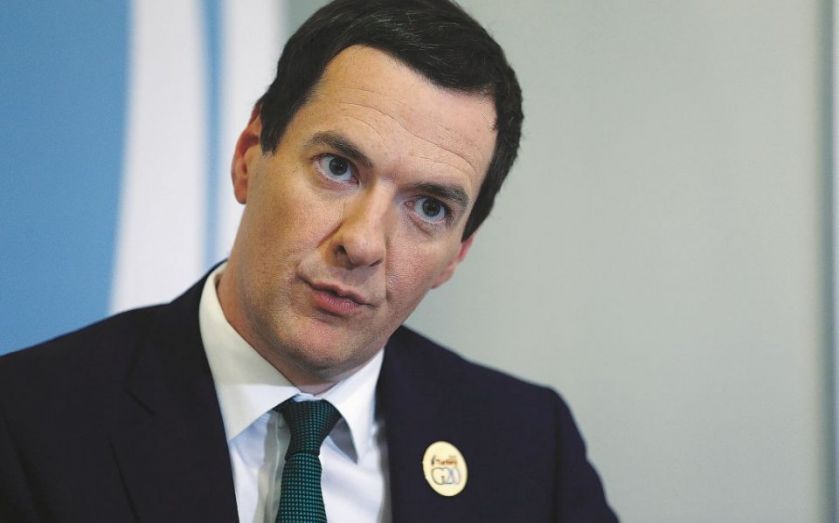Deficit bias: The chancellor’s fiscal strategy has worrying shades of Gordon Brown

At the Autumn Statement 2011, the chancellor bore bad news. The independent Office for Budget Responsibility (OBR) had revised down the growth prospects of the UK economy, and revised up how much of the public deficit would not naturally fall as the economy recovered. George Osborne therefore faced a choice: to cut spending or raise taxes further to meet his deficit targets, or to slowly abandon them – borrowing more than planned. He chose the latter.
Fast forward to last Wednesday. At the Autumn Statement 2015, the chancellor bore better news. The OBR had revised the way it forecasts income tax, national insurance and VAT revenues – predicting a larger-than-expected revenue bonanza. Bank of England “guidance” on the future path of Quantitative Easing had also lowered forecast debt interest costs. The result was an underlying forecast improvement in the public finances of £27bn. Given the extra forecast room for manoeuvre, Osborne therefore faced a choice: to either raise projected spending while still hitting his forecast surplus target for 2020, or to bank the gain – forecasting to borrow less than planned. Of course, he chose the former.
One might notice a pattern here. Underlying public finances now forecast to be worse than expected? Spend more! Underlying public finances now forecast to be better than expected? Spend more! Yes, the chancellor still has an overall aim of reducing spending as a proportion of GDP and running a budget surplus a whole 10 years after entering office, following what would be a wholly unlikely 10 years of uninterrupted economic growth. But what the above shows is that, when the facts change, politicians of all political persuasions still have a “deficit bias”.
This is the key point. Some have used last week’s events to question the OBR’s political independence. Certainly, in this respect, it would be helpful if the chancellor were not given a monopoly on seeing the OBR’s underlying forecasts prior to these politicised statements (though this is the chancellor’s decision, not the OBR’s). But the real story here is how politicians choose to react to new information, not the integrity of Robert Chote’s OBR team.
In opposition, the chancellor and his colleagues continually criticised Gordon Brown’s approach. They said that his spending plans were based on over-optimistic growth forecasts. The Conservatives risk the same charge now. The OBR may well be right this time around. But one would have thought a chancellor scarred by the experience of worse-than-expected growth undermining his deficit targets in the last parliament would not have made himself such a hostage to fortune again.
A second critique of Brown was that he always assumed spending more on an area was a proxy for good quality outcomes. Sadly, when a Spending Review effectively excludes so many areas of government in the name of political expediency – international aid, the NHS, per pupil schools funding, defence, and all spending on pensioners – the argument that spending restraint and reform in other areas can be good for effective government is already lost. Indeed, if a Spending Review is run as competing interests scrambling for a pot, as this Conservative one was, with salami slicing of all government activities, it opens itself to political campaigning from vested interests for self-preservation. This can bring good outcomes (such as the welcome temporary abandonment of tax credit cuts) but also more questionable ones (the protection of the police budget).
The end result of the forecast changes and Osborne’s approach to spending restraint was that, relative to his last budget, this Autumn Statement increased spending and increased taxes. Should the OBR’s forecasts turn out to be too optimistic, the chancellor will likely not run a balanced budget this parliament without cutting more. And he’s made cutting more sound much more unattractive by talking up the “protection” of so many areas as being so necessary.